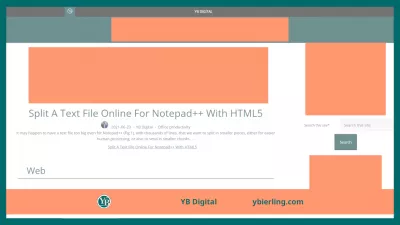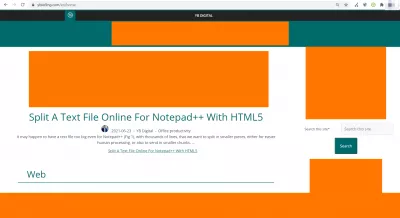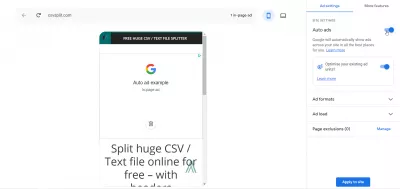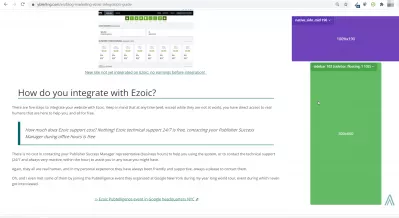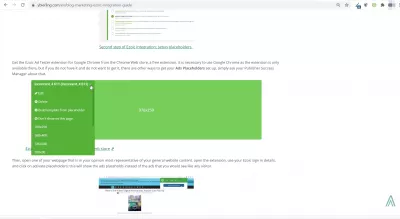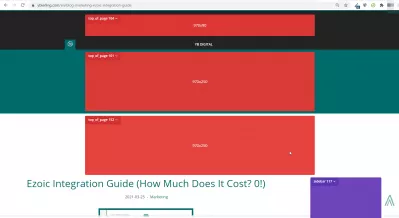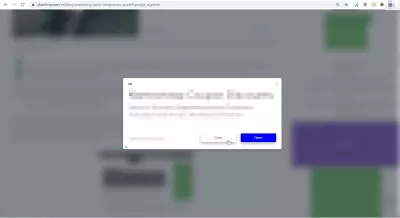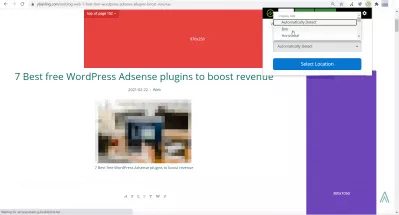Display Advertisement Placeholders: Placement And Optimization
- Placement and optimization of ad placeholders
- What is a website ad placeholder?
- Manual or automatic ad placeholders?
- Tips for optimizing ad placeholder customization
- Sizing and placement of ad placeholders
- Sidebar
- In the middle of the text
- Under / above the headings
- Full screen placement
- What placeholders load the page
- Manual or automatic ad placeholders?
Tips for placing ad placeholders, optimizing their performance, and choosing the right targeting strategy.
Placement and optimization of ad placeholders
It's hard to imagine a profitable website these days without display ads. Only the largest e-commerce representatives can handle this, and even then, to one degree or another, they use ad placeholders. However, for a high return on this type of monetization, one should in principle understand what ad fillers are, and also understand some basic “laws” of their use.
Advertising is a marketing technique for the purpose of generating paid-for-placement sales. The messages themselves are called advertisements. Their goal is to attract buyers and, as a result, sales for the company.
All of these and other important things related to ad placeholders on the site will be discussed in this article.
What is a website ad placeholder?
First of all, you should understand what it is about. An ad placeholder is an object on a web page that is a small script that contains an image and a link to the advertiser's content. They come in different sizes and orientations, but the essence of all types boils down to one thing - displaying an image and text that entices the user to visit the sponsor's site.
For each click-through, the sponsor pays a fixed amount, and with proper traffic, this monetization format will consistently generate income. Also, by the way, there is a format where payment goes for each view of the advertisement. However, for the sponsors themselves, the most important parameter is the click-through rate, that is, the ratio of ad clicks to the total number of views.
Nevertheless, for the site owner himself, the most important thing will not be the clickability itself, but the visibility of the ads and the correspondence of the ad unit to the site audience. Maximizing these parameters greatly increases revenue due to the fact that the audience that is interested in the product or service offered in the ad unit will see the ad itself more. And accordingly, the probability of crossing it increases significantly.
Manual or automatic ad placeholders?
There are several sponsored ad placeholders that are most often used by sponsors when working with these properties. For optimal advertising on your site, the best choice is to combine different options until you find the most effective ones for your audience. So, the methods for implementing ad units:
- Global targeting - as the name implies, this method is about maximum audience coverage. However, this method is often not very effective, because impressions for a really interested audience does not increase, although the total number of impressions increases, which also generates income.
- Contextual targeting - this type of ad placement is to analyze the content of your site and display ads on the same or related topic. This method increases the click-through rate well, especially with the correct manual configuration of the tags used on the page.
- Personal targeting - in this type of placement, the advertiser himself determines which audience the ads will target. The downside is that for many users, personalized ads may be disabled.
- Targeted placement - in this case, the sponsor not only chooses the audience himself, but also chooses the place where the advertisement will be placed. Effectiveness varies, but it's definitely worth a try.
In general, with all but the last method, you are completely free to choose and place ad placeholders. And therefore, further you need to place ads so that they look as harmonious as possible on your site and attract maximum attention from the audience.
Tips for optimizing ad placeholder customization
The last section will discuss the main rules that should be followed when placing ad placeholders. Topics of overloading ad placeholders will also be covered.
Sizing and placement of ad placeholders
Replacing placeholders should be guided by four main places where they will look the most organic and give good visibility.
Sidebar
Learn SEO Basics: Enroll Today!
Boost your website's visibility and traffic by mastering the fundamentals of SEO with our easy-to-follow Basics course.
Start Learning SEO
Sidebar - an ad space on the side of the main content of the site - one of the most common and profitable places to place advertisements there. The click-through rate of ads in a given location can effectively increase up to 40 percent.
In the middle of the text
In the middle of the text - one of the most profitable ad placeholder formats. Naturally, the place in the texts is not chosen at random, but taking into account the fact that at about this place the user will stop from consuming content to move his vision to the next block. This is due, among other things, to the fact that the ad unit stands out brightly against the background of the main content, arousing the visitor's attention, and, accordingly, increasing the likelihood of a click. The effectiveness of this method is on average up to 70 percent higher than when placing ads on the sidebar. To achieve higher efficiency, you can use a block of contextual links, which can be harmoniously associated with the design of the site itself, which will further increase the interest of the target audience.
Under / above the headings
Under / above the headings - the effectiveness of this method, especially with the correct selection of advertising, is that almost all site visitors see this ad, because statistically, most people read less than half of the text content on the page.
Full screen placement
Full screen placement is the most effective way to place an ad unit on a website. The click-through rate is many times higher than the return on other ad placeholders. For maximum profitability, you should sell this placement method yourself. Also, such ads should not appear often, but preferably closer to the moment the visitor leaves the page in order to cause the least degree of rejection.
What placeholders load the page
There are several extremely ineffective places and formats for displaying ad units, the use of which not only interferes with the effective work of advertising, but also subsequently harms the site owner himself. In order:
- You should not place ad placeholders in places and on pages with many elements of the same type. The human brain quickly adapts and begins to filter out advertising blocks from its field of vision.
- Also, it is a bad and even harmful option to place ad placeholders in places where they disguise themselves as interface design or website menu buttons. By clicking on such links, people quickly leave the sponsor's site. Over time, the system sees a similar pattern and starts checking the site and how it advertises. Subsequently, the site is labeled as a source of low-quality traffic, as well as other restrictions that lead to a significant decrease in profits.
- It is ineffective to place ad placeholders in the header of the site, as well as in its footer. In a hat, they sometimes do not even have time to load, and very few people read it to the bottom.
- Do not advertise on blank pages. This not only places ad targeting, but also lowers the loyalty of both visitors and sponsors.
Manual or automatic ad placeholders?
The issue with automatic ad placeholders, is that they will most likely badly integrate with your content, not be relevant to must users, and are the reason why the Google AdSense revenue is so low, at around $1 per 1000 visits, although it varies widely.
Google AdSense - Earn Money From Website MonetizationYou can also top up the automatic ad placeholders by extra ads such as onclick – popunder, interstitial, and push notifications, with PropellerAds native ads for example, and increase your earnings regardless of your content, even if you are not accepted in the better paying ad management systems.
Propellerads Vs Adsense - Comparing The Two PlatformsPropellerAds - Display and Mobile Advertising Network
To sum up, it is better in general to use manual placeholders, such as the ones provided by the Ezoic platform that can easily multiply your AdSense revenue for 1000 visits by 3 to 7. See our full Ezoic review to understand more how this free technology can optimize your ad placeholders revenue!
Ezoic Vs Adsense - Differences Worth ExploringPropellerAds vs Ezoic - Comparing Two Advertising Platforms
Learn SEO Basics: Enroll Today!
Boost your website's visibility and traffic by mastering the fundamentals of SEO with our easy-to-follow Basics course.
Start Learning SEO
